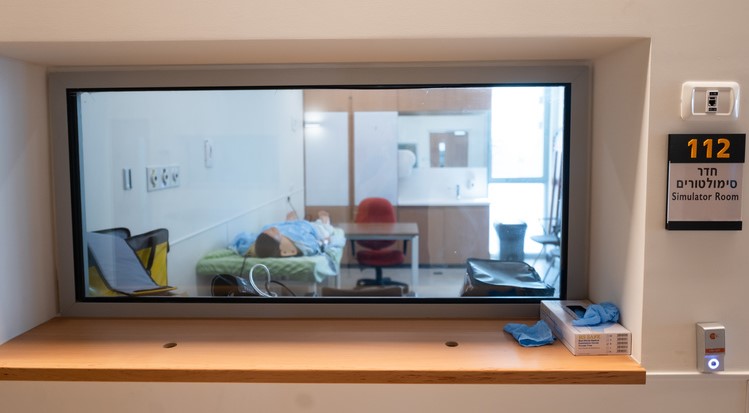For these reasons, simulation has increasingly become critical to today’s education in the health sciences. By developing both knowledge and confidence without patient risk, simulation training improves students’ clinical competencies. Simulation labs also allow for retraining until a certain procedure or skill is mastered and can expose students to a wide range of rare pathologies. Finally, well-designed simulation environments, built to respond to and anticipate evolving emphases in healthcare, can also enhance essential skills in communication and teamwork.
As home to one of Israel’s leading medical simulation centers and a growing Faculty of Health Sciences, BGU plays
a key role in the preparation of tomorrow’s healthcare professionals. Now, with the construction of its new Medical Simulation and Classroom Building (MSCB), it is poised to dramatically expand its impact in healthcare training, education, and research, and deliver both long-term and immediate health benefits at a significantly larger scale.
Nearly half the MSCB is dedicated to the Field Family Medical Simulation Center (FFMSC), whose realistic environments
and equipment will replicate real-world health settings and scenarios. The FFMSC — the most advanced medical simulation
center in Israel — will draw more top doctors and medical, nursing, paramedic, and physiotherapy students to BGU, as
well as offer the University’s strategic partners in the Negev a much-needed training facility. In addition, simulation exercises at the MSCB will be the subject of clinical research on how simulation can complement and improve medical education and knowledge.

Maximizing SpaceThe only facility of its size in Israel built specifically for medical-simulation education, the MSCB features environments designed to meet complex curricular needs. Simulation settings harness all available space to ensure competencies in emergency, pediatric, obstetric, and nursing care, as well as surgery and physiotherapy services. It includes:
55,972 sq. ft floor space
52 simulation stations
27 simulation rooms
8 classrooms
4 lecture halls
2 debriefing rooms
An Emergency Medicine Emphasis
When patients present in a state of shock, healthcare providers know the cause is circulatory failure. What they don’t know is whether that failure stems from excessive bleeding, anaphylaxis, a pulmonary embolism, or a heart attack. Yet while identifying the cause and rapidly intervening is the key to decreasing mortality, one of the best means of obtaining a fast and accurate diagnosis — an ultrasound — is something most physicians are not trained to do. Dr. Lior Fuchs and Prof. Sergio Koval of BGU’s Joyce and Irving Goldman School of Medicine knew this and decided to integrate training in point-of-care ultrasound (POCUS) into the medical school's curriculum. Now, all fourth-year BGU medical students are trained in POCUS procedures through simulations on advanced manikins. And thanks to Dr. Oren Wacht, head of BGU’s Department of Emergency Medicine, POCUS simulation training has been extended to paramedic students, making BGU one of just a few places in the world to train first responders in the use of this diagnostic tool.